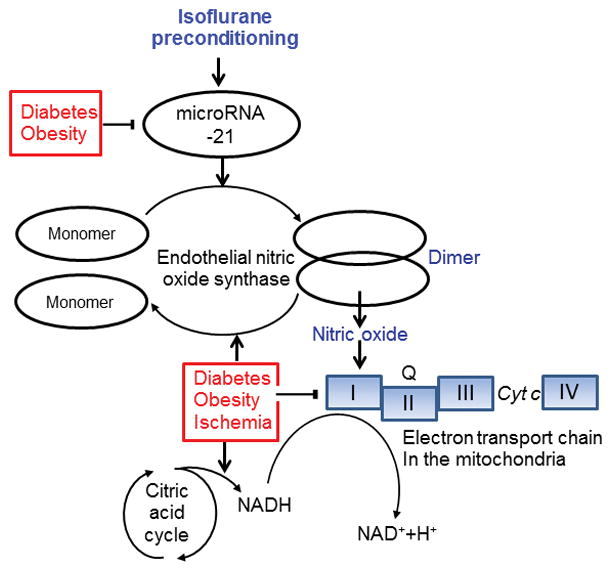Figure 6.

Proposed mechanisms responsible for failure of isoflurane preconditioning to protect the heart against ischemia/reperfusion injury in obese type 2 diabetic mice. InC57BL/6 control mice, isoflurane preconditioning up-reglates microRNA-21, leading to the dimerization of endothelial nitric oxide synthase through direct and/or indirect mechanisms. Dimeric endothelial nitric oxide synthase produces nitric oxide, that acts on respiratory chain Complex I [reduced form of nicotinamide adenine dinucleotide (NADH):ubiquinone] in the mitochondria and facilitaes NADH to release electrons. The electrons removed from respiratory chain Complex I are subsequently transferred to coenzyme Q, Complex III, cytochrome c (Cyt c), and Complex IV, which uses the electrons and hydrogen ions to reduce molecular oxygen to water. Type 2 diabetes mellitus with obesity down-regulates microRNA-21 and prevents the up-regulation of microRNA-21 by isoflurane. Moreover, diabetes, obesity, and ischemia together facilitates the transfer of endothelial nitric oxide synthase dimers to monomers, inhibits respiratory chain Complex I, and elevates the production of NADH though multiple pathways including citric acid cycle. These changes elicited by diabetes and obesity contribute to failure of isoflurane cardiac preconditioning.
